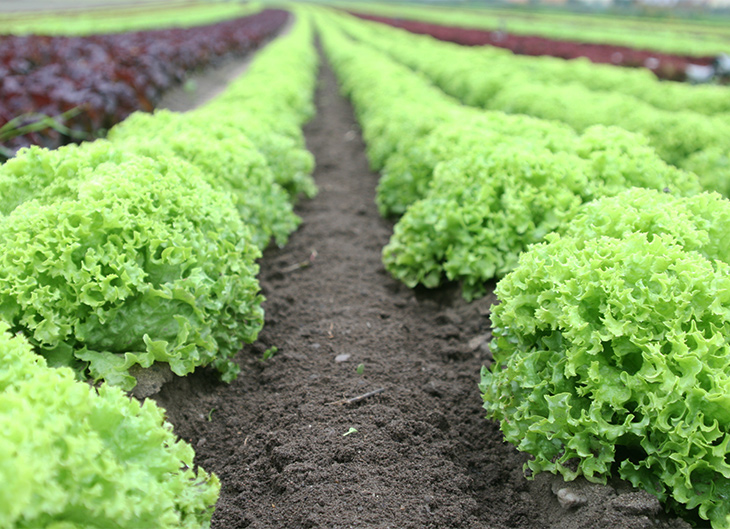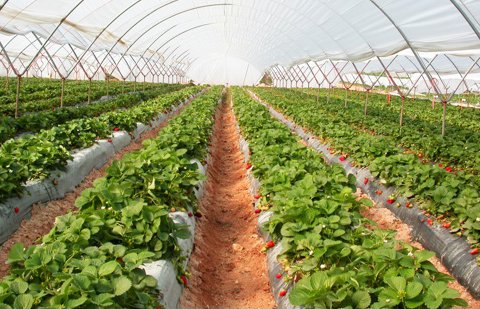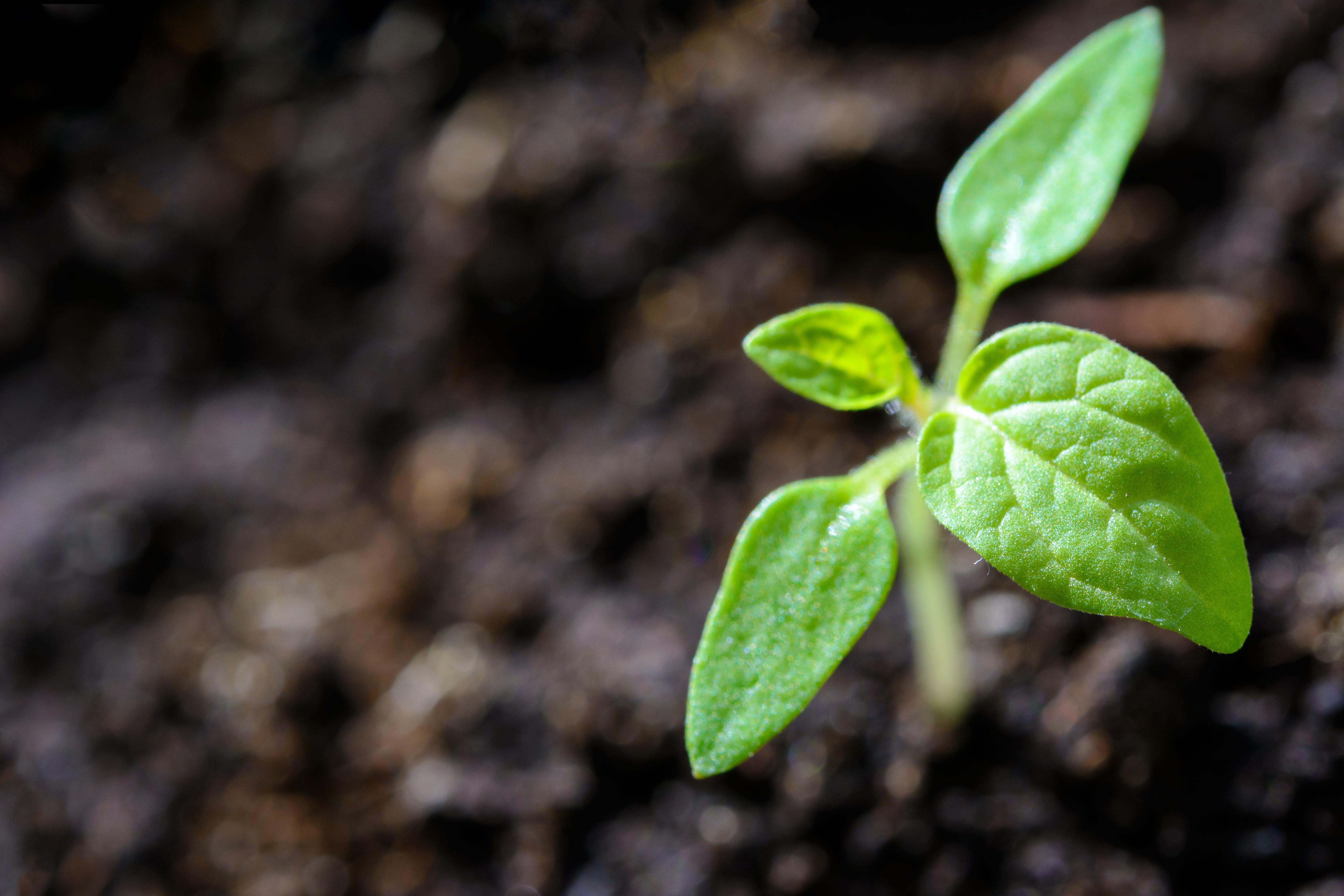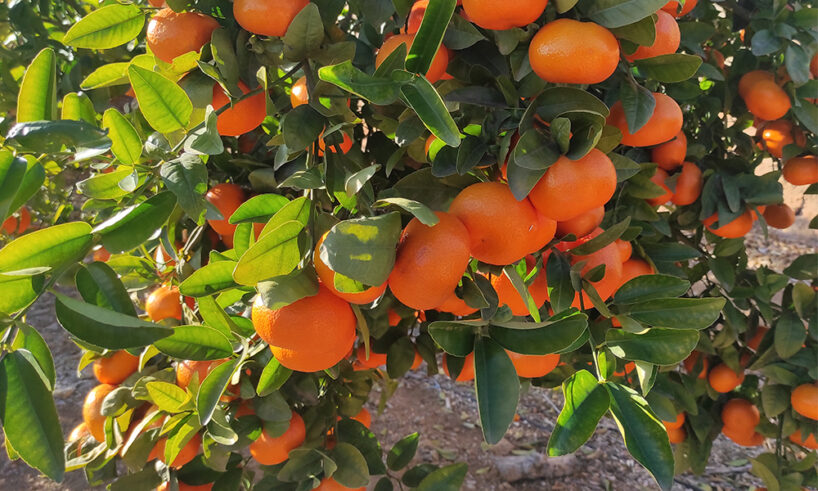
The versatile technology of Agrometodos: the Lanzadera® System
The constantly evolving nature of agriculture and current regulatory frameworks, which are increasingly restrictive and respectful of the environment along the whole agricultural production chain, have led Agrométodos to study, research, formulate, develop and market products that allow us to be more efficient and effective in contributing to the nutrition of our crops and thus be able to optimise the different resources. For this reason, we have our VERSATILE TECHNOLOGY: THE LANZADERA® SYSTEM, a product range which includes: Lanzadera® 3 (Zinc, Manganese and Magnesium), Lanzadera® Calcio, Lanzadera® Cobre, Lanzadera® Green (Iron, Manganese and Zinc), Lanzadera® Manganeso and Lanzadera® Potasio.
Through this article Agrometodos presents the new explanatory video of the Lanzadera® System, in which its mode of action and the benefits of its application are clearly explained.
Lanzadera® System: Definition
The exclusive Lanzadera® System comprises negatively charged nano-particles known as “nano-clusters” that come from natural organic compounds,
The Lanzadera® System is a powerful natural chelating agent. These nano-particles wrap around or “sequester” the cation protecting it against unwanted reactions with other elements that are present.
The versatility of Lanzadera® products lies in the fact that they can be applied in two ways, either via foliar or irrigation application, where, thanks to our technology, they are equally efficient and effective, as we can see from the following test carried out with Lanzadera® Calcio (Figure 1).
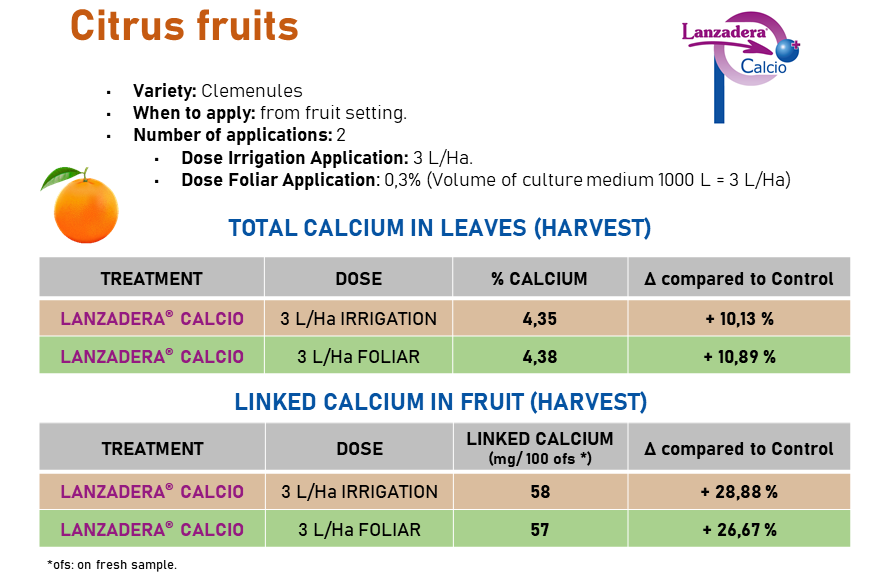
Lanzadera®System: Mode of Action
Our products have different action mechanisms and benefits, depending on the application.
FOLIAR APPLICATION
The “nano-clusters” couple to the outer part of the plant wall (they dock there, much like a boat in a port) and they prepare to deliver the transported cations by a process of “electrostatic vibration“. The cations thus delivered are 100% assimilable and do not generate phytotoxicity to the plant.

VIA IRRIGATION
It can be considered the differential fact since the Lanzadera® System is able to move quickly within the soil solution, transferring the nutrients it transports to the interior of the root more quickly and directly. Once the nutrient (cation) is delivered, the “nano-clusters”, which are negatively charged, behave like the exchange complex, that is, they are able to adsorb positively charged nutrient elements from the soil solution, retaining them on their surface (increases the size of the change complex) and preventing them from being lost by leaching.
Likewise, by increasing the Cation Exchange Capacity (CEC), the bioavailability of nutrients in the soil increases, thanks to the recharge capacity it has.
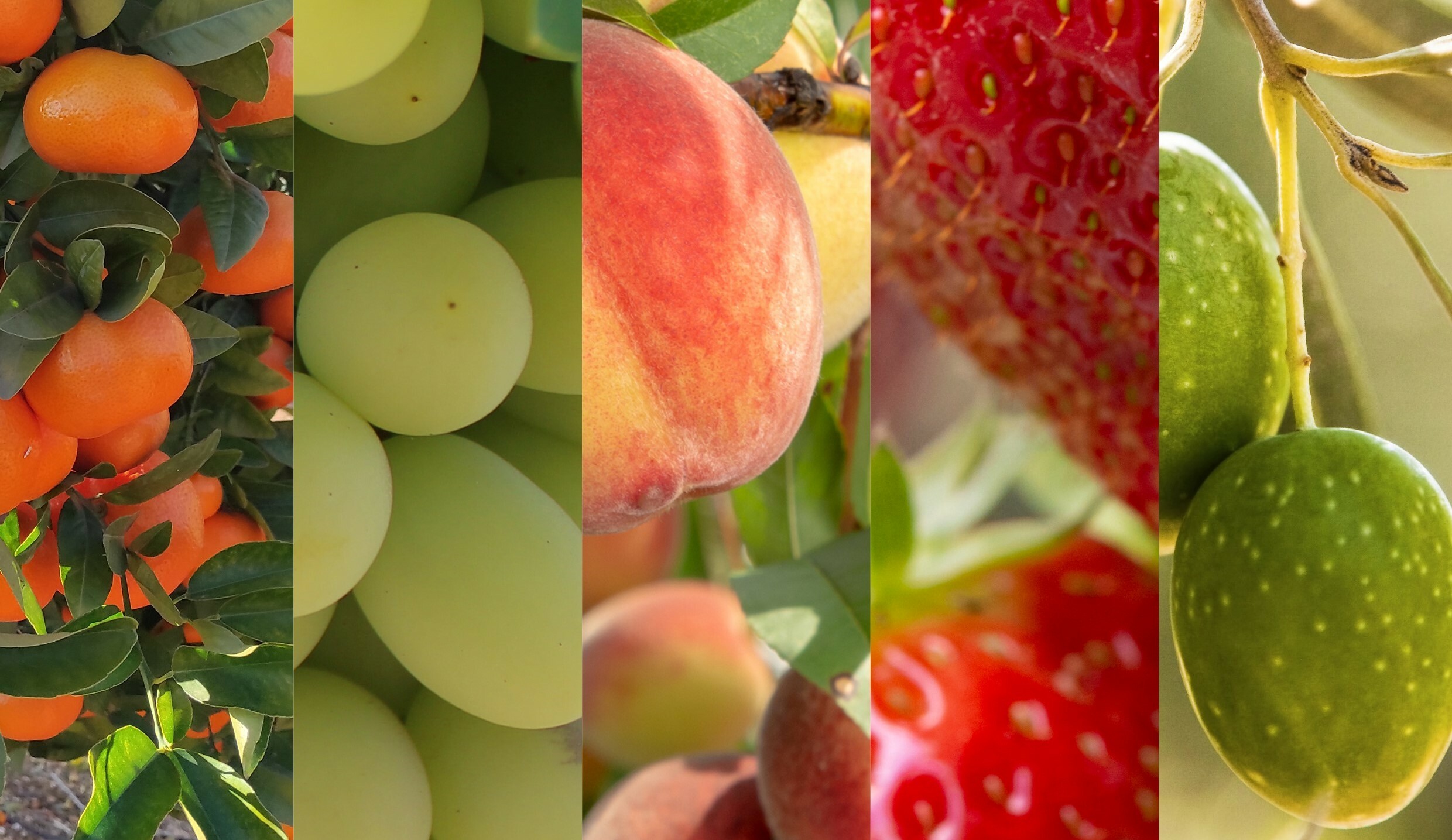
To verify this “more direct nutrition”, as a result of the greater speed of absorption and translocation of the nutrients, we carry out some measurements by extracting sap from the sprout of a plant.
The method is based on a modified “Scholander” type pressure chamber, used by scientists since 1965 and which, under pressure and without destroying the plant material, makes it possible to extract the sap from the shoot. Using this method, we are able to measure what is really happening in the plant sap (xylematic and phloematic) at a given moment, checking how the nutrient that we want to analyse is moving.
The trial was undertaken in one of the most unfavourable scenarios – the cultivation of the short cycle peach. Two theses were carried out, in which we compared the irrigation application of Lanzadera® Calcio with a commercial standard at a ratio of 3 L/Ha applied at collar fall. Sap was extracted, collected from different shoots, at 2 hours, 24 hours, 3 days and 7 days after application, to find out the calcium content of each sample and therefore be able to establish the curve of evolution after application (Figure 3).
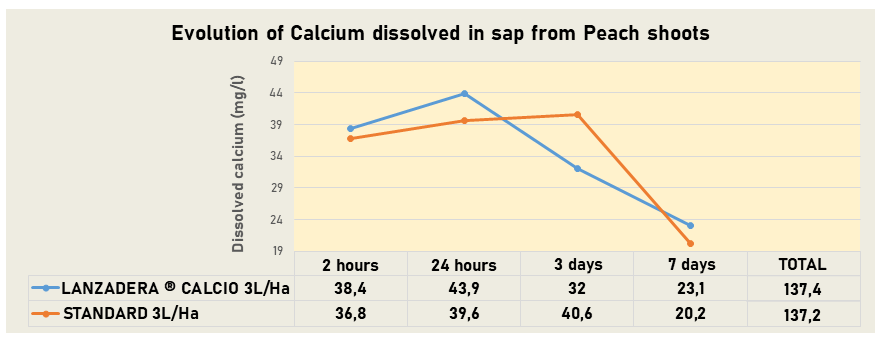
As can be seen, the Lanzadera® Calcio product applied via irrigation provides higher calcium content after application. In addition, there is a much faster delivery in the plant, being its maximum at 24 hours.
Likewise, it was verified how, by increasing the CEC (measured in meq/100 g), the bioavailability of nutrients and micronutrients present in a smaller proportion in the soil is increased (Figures 4 and 5) and how these increases are reflected in an increase in leaf nutrients (Figures 6 and 7).
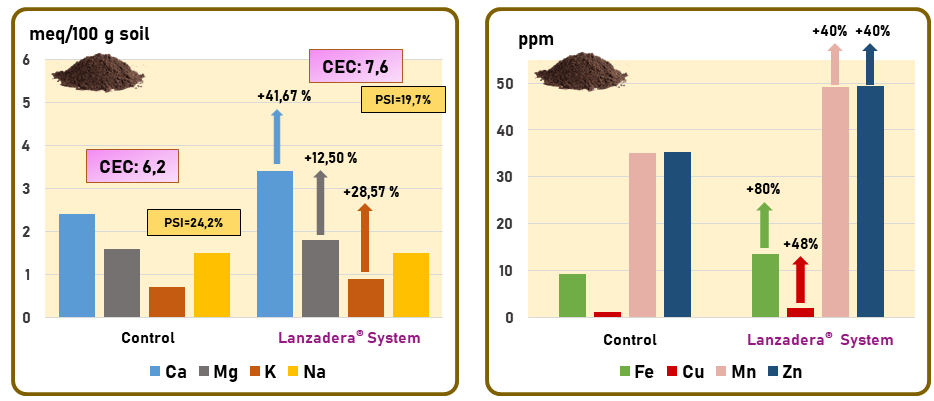
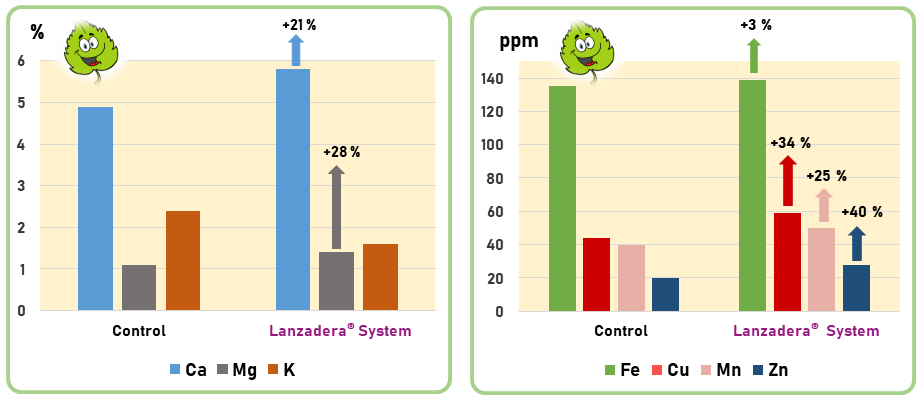
In short, our Lanzadera® range is a versatile technology that provides more direct nutrition and fast assimilation of nutrients, and it can be used in both foliar and irrigation applications. In addition, when applied via irrigation, the Lanzadera® System behaves like the exchange complex, moves in the soil solution and, being organic and biodegradable, is a powerful stimulator of soil microbial activity.

